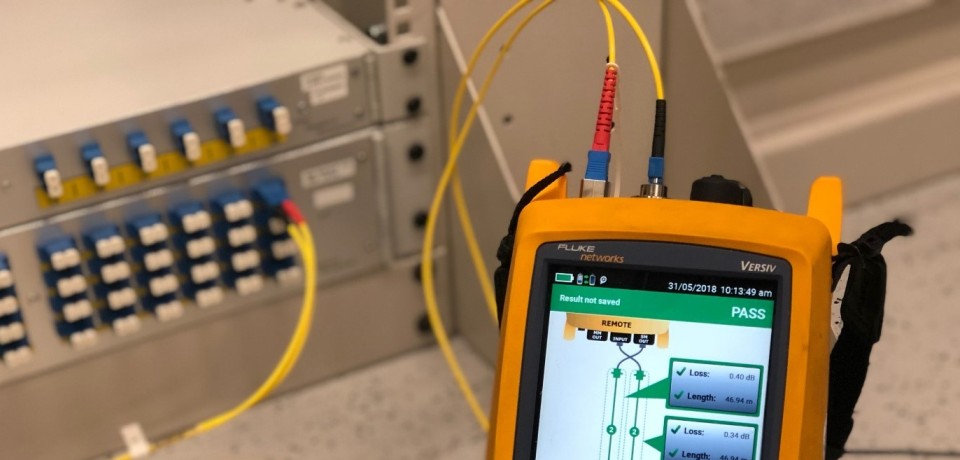Different to Copper
Just as installing fiber optic cable is completely different from installing copper cable, the testing processes also differ greatly. Much of the copper cable testing revolves around the various types of interference that can affect the performance of a network.
Fiber optic cable is completely immune from interference caused by crosstalk, EMI, and RFI. Therefore, tests for these are not necessary. What you do need for a fiber optic installation is to ensure that the signals arrive at their destinations with sufficient strength to be read and that the installation process has not degraded that strength.
Because of its superior signal carrying capabilities, fiber optic cable installations can include various types of cable runs. The typical LAN arrangement consists of single fiber links that connect a patch panel in a wiring closet or data center to wall plates or other individual equipment over relatively short distances, with patch cables at both end.
Owing to the limited number of connections testing these types of links is fairly straightforward. However, fiber optic can also support extremely long cable runs that require splices every two to four kilometers, which introduces a greater potential for connection problems.
A Battery of Tests
To completely test a fiber optic installation, you should perform your battery of tests three times. The first series of tests should be on the spooled cable before the installation to ensure that no damage occurred during shipping.
The installation costs for fiber optic cable can be high—often higher than the cost of the cable and other hardware so it’s worthwhile to test the cable before investing in its installation. Excessive signal loss is caused mostly by the connections, simply testing the continuity of the cable at this stage is usually sufficient. This continuity testing is sometimes referred to as a “flashlight” test because it amounts to shining light in one end of the fiber strand and seeing if there is light at the other end.
The second series of tests should be performed on each separate cable segment as you install it, to ensure that the cable is not damaged during the installation and that each individual connector is installed correctly. By testing at this stage, you can localize problems immediately, rather than trying to track them down after the entire installation is completed.
Finally, you should test the entire end-to-end connection, including all patch cables and other hardware, to ensure that cumulative loss is within certified parameters. For fiber optic LAN installations, only two tests are generally required: optical power and signal loss. Other types of tests are used on long distance fiber optic links and in troubleshooting, which are much more complex and require more elaborate equipment.


